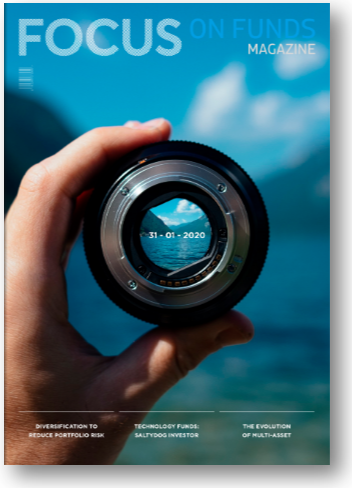Aug
2023
Focus on Funds: The Evolution of Multi-Asset
DIY Investor
14 August 2023
In the beginning, investors wanting a diversified portfolio of assets had two main choices. With profits funds were often chosen by investors who wanted greater security through perceived guarantees. Alternatively, managed funds were selected by those who preferred more transparency and control over their investments.
Broadly speaking, both of these approaches unfortunately left investors disappointed. With profits funds ultimately failed to deliver the returns investors expected when they discovered they were exposed to market risk and the imposition of Market Value Adjustments (MVAs) to reflect the underlying performance of the assets in the fund.
‘Broadly speaking, both of these approaches unfortunately left investors disappointed’
Managed funds typically had more equity risk than many had appreciated. Indeed, funds labelled as ‘balanced’ often had up to 85% exposure to equities and ‘cautious’ funds often held in the region of 60%.
This led the Investment Association to rename their managed sector classifications to better reflect the equity risk funds could take and introduced the Mixed Investment sectors alongside the Flexible Investment sector.
Today, the multi-asset sector is a diverse, vibrant and strongly growing area of the market. The global financial crisis reinforced the importance of diversification and clear and transparent communication to investors.
Changes in the regulatory environment, particularly post RDR, and the continued demise of defined benefit pensions schemes have contributed to the increased demand for multi-asset funds and their popularity has soared. Furthermore, an increasing number of advisers have turned to multi-asset specialists to support their investment advice process as an outsourced solution.
‘the multi-asset sector is a diverse, vibrant and strongly growing area of the market’
The universe of multi-asset funds is broad – within the IA Mixed Investment and Flexible sectors, there are over 500 strategies and assets under management of approximately £130bn.
Traditional balanced funds and fund of funds remain, but the market has broadened and growth areas include risk targeted funds, absolute return strategies, multi-asset growth and multi-asset income funds.
By typically focusing on delivering investors a clearly articulated outcome and objective, the latter two strategy types share a common broad characteristic that supports their use by advisers.
Rather than focus on return, risk targeted funds are those where controlling the level of risk is the managers’ primary objective.
This is often expressed as a volatility range (for example, 3%-6% annualised) or relative to the volatility of equities (for example, two thirds the volatility of equities over the long term). The popularity of these funds has led the IA to introduce a new sector earlier this year.
The Volatility Managed sector was launched in April 2017 with 83 funds and around £20bn of assets. However, not all fund groups elected to have their funds moved to the new sector and therefore several still remain in the unclassified or the mixed investment peer groups so the sector in isolation understates the number of funds actually being managed in this way.
‘Outcome orientated multi-asset funds are also a growing part of the market’
Square Mile’s own risk targeted universe, constructed on a qualitative basis, indicates assets of around £50 billion are managed in this space.
Outcome orientated multi-asset funds are also a growing part of the market. They have clear capital accumulation or income objectives usually expressed as a target over inflation or cash.
Predominantly long only, they like other long only multi-asset funds, rely on the diversification benefits of investing in differing asset classes to meet their long-term objectives.
‘Given the diversity in the sector we feel it is particularly important to be clear about a fund’s objective’
This can leave investors vulnerable to periods of drawdown when asset class movements become highly correlated. In contrast, multi-asset/strategy funds with absolute return objectives tend to have a wider investment remit and can target a consistent delivery of returns across most market conditions.
This is of course an aspiration and not a guarantee. The universe of funds is relatively young with many yet to be fully tested in difficult and/or sharply falling markets.
Outside of the fund arena, DFMs have also been gaining market share. They typically offer a suite of multi-asset portfolios that are suitable for varying levels of risk. They can offer consistency of advice for the adviser’s end client and can sit within the adviser’s centralised investment proposition.
At Square Mile, we do not see the trend towards multi-asset funds and solutions dissipating any time soon. We think the sector is set to maintain its popularity and growth, particularly those funds that can demonstrate value for money.
However, the market is becoming increasingly crowded and there is a lot of choice for advisers when selecting a multi-asset manager.
Given the diversity in the sector we feel it is particularly important to be clear about a fund’s objective – how it is structured to achieve that objective and importantly, what risks are investors exposed to for that objective to be achieved.

To learn more about actively managed funds read the latest issue of Focus on Funds magazine:
Important Information
This article is for the use of professional advisers and other regulated firms only. It is published by, and remains the copyright of, Square Mile Investment Consulting and Research Ltd (“SM”). SM makes no warranties or representations regarding the accuracy or completeness of the information contained herein. This information represents the views and forecasts of SM at the date of issue but may be subject to change without reference or notification to you. SM does not offer investment advice or make recommendations regarding investments and nothing in this presentation shall be deemed to constitute
financial or investment advice in any way and shall not constitute a regulated activity for the purposes of the Financial Services and Markets Act 2000. This presentation shall not constitute or be deemed to constitute an invitation or inducement to any person to engage in investment activity. Should you undertake any investment activity based on information contained herein, you do so entirely at your own risk and SM shall have no liability whatsoever for any loss, damage, costs or expenses incurred or suffered by you as a result. SM does not accept any responsibility for errors, inaccuracies, omissions or any inconsistencies herein. Past performance is not a guide to future returns.
Commentary » Latest » Mutual funds Commentary » Mutual funds Latest » Take control of your finances commentary

Leave a Reply
You must be logged in to post a comment.